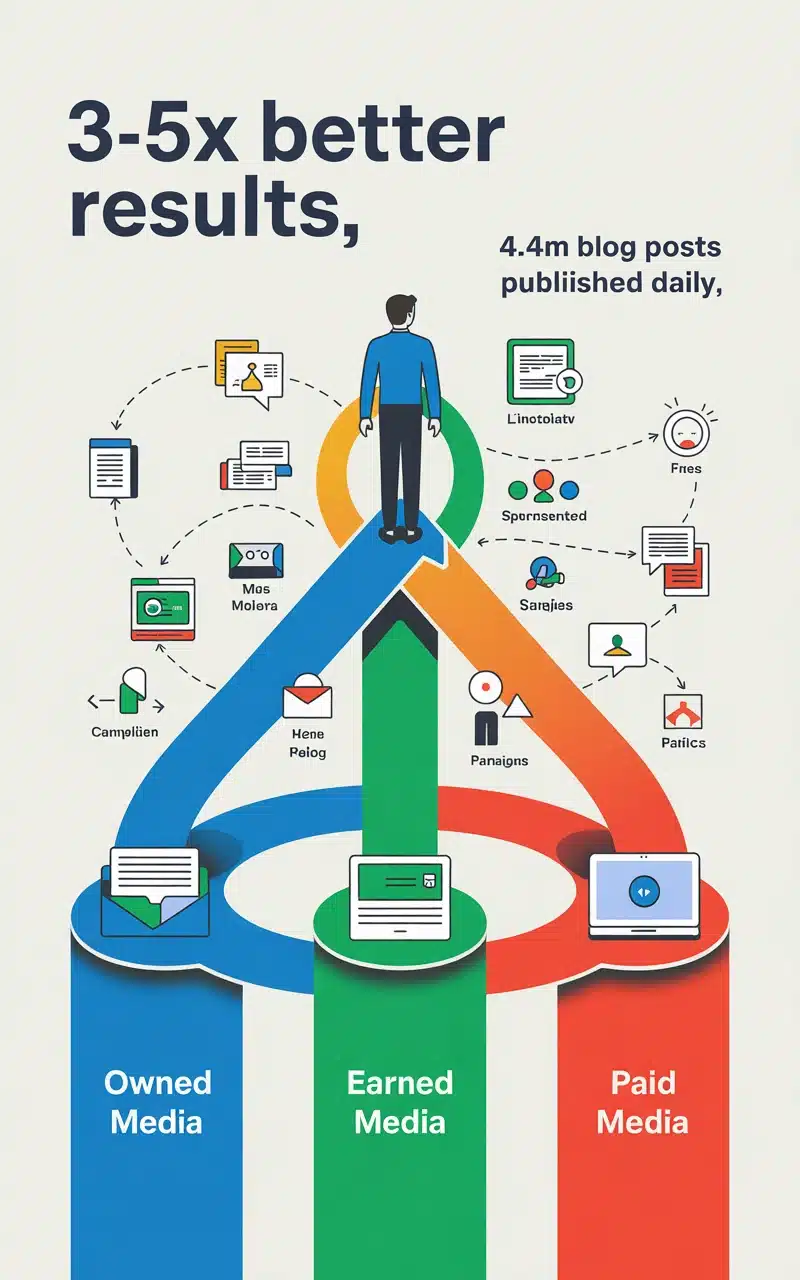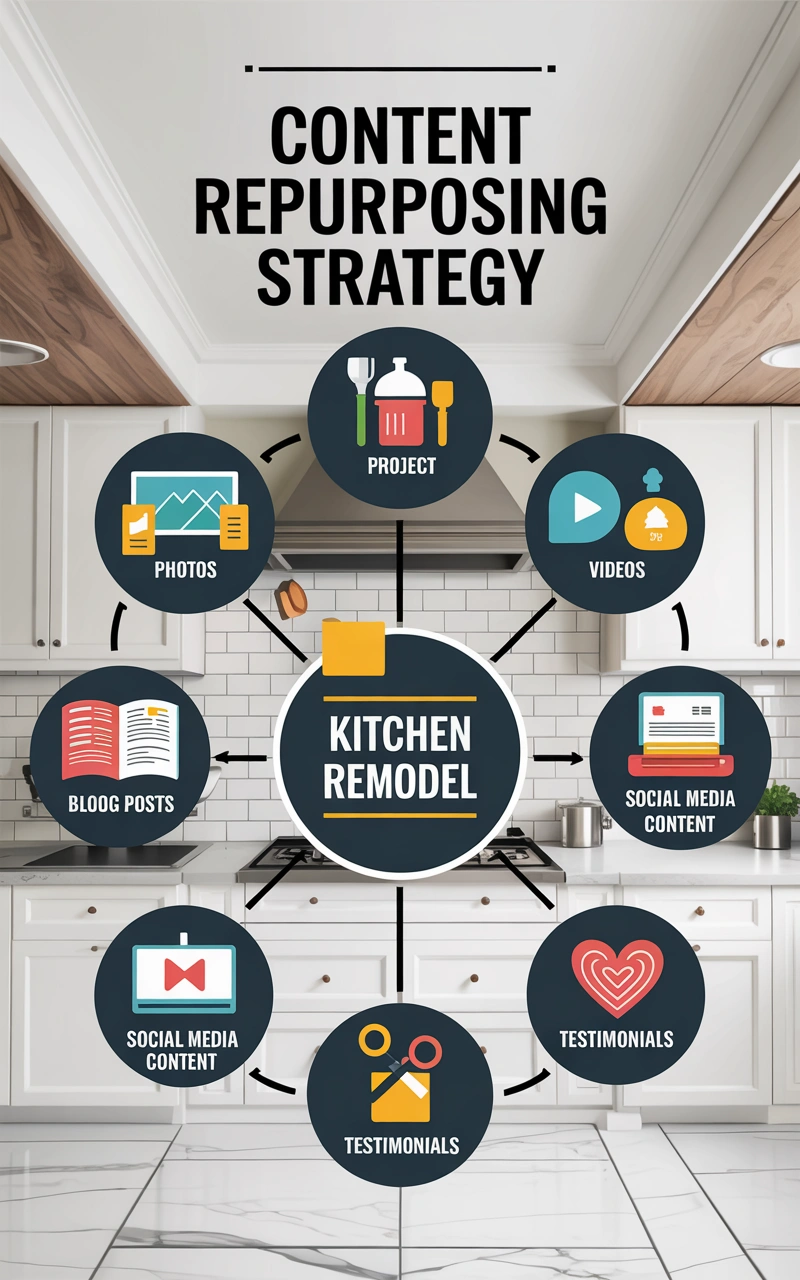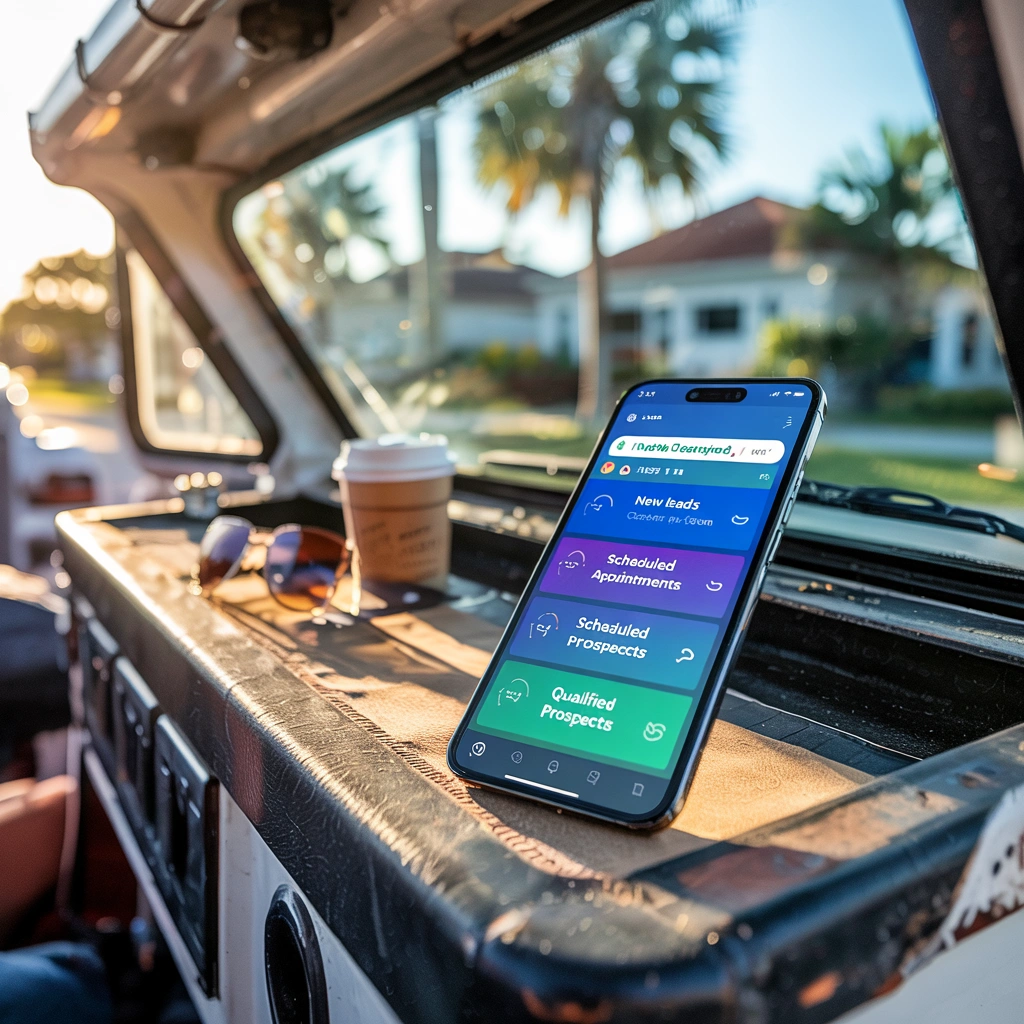
Small Business Content Marketing: DIY vs Done-For-You Services (Cost Breakdown & ROI Analysis)
You just published another blog post. You shared it on Facebook. Maybe you sent it to your email list of 47 subscribers.
Now you’re waiting for the flood of new customers to roll in.
Crickets.
Sound familiar? You’re not the only small business owner watching competitors get thousands of views while your brilliant content sits invisible in the digital wasteland.
Here’s what nobody tells you: The problem isn’t your content. It’s how you’re distributing it.
Most small businesses have this completely backwards. They spend 90% of their budget creating content and 10% getting it seen. Then they wonder why nothing happens.
Today, that changes. You’re about to discover the exact system successful small businesses use to compete with companies that have 10x their budget.
Why Your Current Content Strategy Is Bleeding Money
Let me paint you a picture that probably feels painfully familiar.
You spend $500 hiring a writer for a comprehensive guide about your industry. You spend another $200 on graphics and formatting. Maybe you even invest in professional photography.
Total investment: $700.
Then you publish it on your website, share it once on social media, and… nothing. Maybe 23 people see it. Maybe 2 people read it. Zero new customers.
You just threw $700 down the drain.
This happens because you fell for the biggest lie in content marketing: “If you build it, they will come.”
They won’t. Not unless you make them aware it exists.
The harsh reality: 90% of all content gets zero organic traffic from Google. Your brilliant blog post is competing with 7.5 million other blog posts published every single day.
Without a distribution strategy, your content is like hosting a party and forgetting to send invitations.
The Content Distribution System That Works
Here’s how smart small businesses flip the script and start winning:
They spend 40% on content creation and 60% on content distribution.
This isn’t some theoretical framework. This is exactly what companies like Dollar Shave Club, Warby Parker, and Mailchimp did when they were small businesses competing against giants.
They understood a fundamental truth: Average content with great distribution beats amazing content with poor distribution every single time.
Your Small Business Content Distribution Budget Blueprint
The $500/Month Starting System
Perfect for businesses just getting serious about content marketing:
Content Creation: $200 (40%)
- 2 blog posts per month
- Basic graphics and formatting
- Simple video content
Content Distribution: $300 (60%)
- $100 for social media advertising
- $100 for email marketing tools and list building
- $100 for guest posting outreach and networking
Expected Results:
- 2,000-5,000 monthly content views
- 50-100 new email subscribers
- 5-15 qualified leads
The $1,500/Month Growth System
For businesses ready to scale their content impact:
Content Creation: $600 (40%)
- 4 comprehensive blog posts
- Professional graphics and video
- Podcast or video series
Content Distribution: $900 (60%)
- $400 for social media and Google advertising
- $200 for content syndication platforms
- $150 for email marketing and automation
- $150 for influencer partnerships
Expected Results:
- 8,000-15,000 monthly content views
- 200-400 new email subscribers
- 25-50 qualified leads
The $3,000/Month Domination System
For businesses serious about content marketing ROI:
Content Creation: $1,200 (40%)
- 6-8 high-quality blog posts
- Professional video content
- Interactive tools and resources
Content Distribution: $1,800 (60%)
- $800 for multi-platform advertising campaigns
- $400 for content syndication and native advertising
- $300 for email marketing and marketing automation
- $300 for partnerships and sponsored content
Expected Results:
- 20,000-40,000 monthly content views
- 500-800 new email subscribers
- 75-150 qualified leads
Cost-Effective Content Distribution That Delivers Results
Free Distribution Methods That Work (Even in 2025)
1. The Email First Strategy Your email list is your most valuable distribution channel. Every piece of content should go to your subscribers first.
Why this works: Email delivers 4,200% ROI according to recent studies. Your subscribers have already raised their hands and said they want to hear from you.
Action steps:
- Send your content to subscribers 24 hours before posting anywhere else
- Create email-exclusive content previews
- Ask subscribers to share content that resonates
2. The Social Media Cross-Pollination Method: Don’t just post the same thing everywhere. Adapt your content for each platform’s audience and format.
LinkedIn: Professional insights and industry commentary, Facebook: Behind-the-scenes stories and community building, Twitter: Quick tips and conversation starters, Instagram: Visual storytelling and process documentation
3. The Strategic Community Participation Approach Find 5-10 online communities where your ideal customers spend time. Become a valuable contributor, not a spammer.
Reddit communities, Facebook groups, Slack channels, Discord servers – wherever your people gather, that’s where you need to be sharing valuable insights.
Low-Cost Paid Distribution That Pays for Itself
1. Micro-Targeted Social Media Advertising Start with $5-10 daily budgets. Target very specific audiences based on interests, behaviors, and demographics.
Facebook/Instagram example:
- Target: Small business owners aged 30-55 in your city
- Interest: Business coaching, entrepreneurship
- Budget: $10/day
- Expected cost per click: $0.75-$1.50
2. Google Ads for Long-Tail Content Keywords Don’t compete for expensive keywords like “marketing.” Target long-tail phrases like “content marketing for small restaurants” or “social media tips for local businesses.”
Budget recommendation: $300-500/month Expected cost per click: $0.50-$2.00 Conversion rate: 2-5%
3. Newsletter Sponsorships in Your Niche Find newsletters your ideal customers read and sponsor them. Often more cost-effective than social media advertising with higher engagement rates.
Typical costs: $0.10-$0.50 per subscriber. Expected click-through rate: 3-8% Conversion rate: 5-15%
Content Marketing Budget Planning That Makes Sense
The 90-Day Content Distribution Rollout
Month 1: Foundation Phase Focus entirely on free distribution methods while building your systems.
Week 1-2: Set up email marketing system, optimize social media profiles. Week 3-4: Begin strategic community participation, start guest posting outreach
Budget allocation: 60% content creation, 40% distribution tools and systems
Month 2: Testing Phase. Add small paid campaigns to test what works for your audience.
Week 5-6: Launch micro-budget social media campaigns ($5-10/day) Week 7-8: Test Google Ads for your best-performing content
Budget allocation: 50% content creation, 50% distribution and testing
Month 3: Scaling Phase. Double down on what’s working, eliminate what’s not.
Week 9-10: Increase budget for successful paid channels. Week 11-12: Add new distribution methods based on test results
Budget allocation: 40% content creation, 60% distribution and scaling
Content Distribution Pricing Plans That Fit Your Budget
The Bootstrapper Plan ($0-$200/month)
- Email marketing: $0-50/month
- Social media scheduling tools: $0-30/month
- Canva Pro for graphics: $15/month
- Guest posting and community participation: Free (time investment)
The Growth Plan ($200-$800/month) Everything in Bootstrapper, plus:
- Social media advertising: $200-400/month
- Email marketing automation: $50-100/month
- Content syndication: $100-200/month
- Basic influencer partnerships: $100-200/month
The Scale Plan ($800-$2,000/month) Everything in Growth, plus:
- Multi-platform advertising campaigns: $500-1,000/month
- Advanced marketing automation: $100-300/month
- Podcast advertising: $200-500/month
- Strategic partnerships and sponsored content: $200-400/month
Small Business Content Packages That Convert
The Content Multiplication System
Instead of creating 20 different pieces of content, create 5 pieces and distribute them 20 different ways.
One comprehensive blog post becomes:
- 5 social media posts highlighting key points
- 1 email newsletter with the main insights
- 3 short videos explaining core concepts
- 1 infographic summarizing key data
- 5 LinkedIn posts adapted for a professional audience
- 10 Twitter threads breaking down sections
This approach cuts content creation costs by 60% while increasing distribution opportunities by 300%.
The Hub and Spoke Distribution Model
Your website is the hub. Everything else is a spoke that drives traffic back to the hub.
Hub content (your website):
- Comprehensive guides and resources
- Case studies and success stories
- Tools and calculators
- Email opt-in forms
Spoke content (everywhere else):
- Social media teasers that link back
- Email snippets that drive website traffic
- Guest post excerpts that reference full articles
- Paid ad content that leads to landing pages
The Done-For-You Solution: When DIY Isn’t Working
Let’s be honest. You didn’t start your business to become a content marketing expert. You started it to solve problems for your customers.
If you’re a crypto project founder trying to build legitimacy in a skeptical market, or a small business owner competing against bigger brands online, your time is better spent on what you do best – running your business.
This is where professional content distribution services become not just helpful, but essential for your survival.
Who Benefits Most from Done-For-You Content Distribution
Crypto/DeFi/NFT Project Founders: You’re wearing 15 different hats already. Community building, investor relations, product development – when do you have time to master content distribution too?
The challenge: You need credible media coverage fast. You need to appear on sites like FOX, Digital Journal, and Google News to validate your project. You need consistent organic traffic without depending on ads that crypto companies can’t even run.
Traditional Small Business Owners: You run a medical practice, home services company, or consulting business. You know you need to be “found online,” but the technical aspects feel overwhelming.
The challenge: You’re tired of inconsistent content creation. You need local visibility, but don’t understand the technical aspects. You want to compete against bigger brands but have limited resources.
The True Cost of DIY Content Distribution
Before you decide to handle content distribution yourself, consider the real costs:
Time Investment:
- Content creation: 8-12 hours per week
- Distribution across channels: 10-15 hours per week
- Community engagement: 5-8 hours per week
- Performance tracking: 3-5 hours per week
Total: 26-40 hours per week
At $50/hour (conservative estimate of your time value), that’s $1,300-$2,000 per week in opportunity cost.
Learning Curve Costs:
- 3-6 months to understand what works for your audience
- $2,000-$5,000 in wasted ad spend during the testing phase
- Lost opportunities while competitors gain market share
- Stress and frustration of managing multiple moving parts
Tool and Software Costs:
- Email marketing platform: $100-300/month
- Social media management: $50-200/month
- Design software: $50-100/month
- Analytics and tracking: $100-500/month
- Content creation tools: $50-200/month
Total monthly tools: $350-1,300
The Done-For-You Content Distribution Alternative
Professional content distribution services handle the entire process for you:
What’s Included:
- Content strategy development based on your business goals
- Professional content creation (News articles, podcasts, blogs, social posts, videos, slideshows, infographics)
- Multi-channel distribution across news article platforms + 300 other places
- Community engagement and relationship building
- Performance tracking and optimization
- Monthly reporting with actionable insights
Typical Investment:
- Starter Package: $1,500-2,500/month
- Growth Package: $2,500-5,000/month
- Enterprise Package: $5,000-10,000/month
Why This Saves Money:
Compare the DIY approach:
- Your time: $1,300-2,000/week ($5,200-8,000/month)
- Tools and software: $350-1,300/month
- Wasted ad spend: $500-1,500/month
- Total DIY cost: $6,050-10,800/month
Professional service cost: $1,500-5,000/month
You save $550-5,800 per month while getting better results.
How Professional Content Distribution Works
Month 1: Foundation and Strategy
- Audit your current content and distribution efforts
- Develop a comprehensive content strategy
- Set up and optimize all distribution channels
- Begin content creation and initial distribution
Months 2-3: Testing and Optimization
- Test different content formats and distribution methods
- Optimize based on performance data
- Scale successful strategies
- Build relationships with key communities and influencers
Month 4+: Scaling and Growth
- Implement advanced distribution strategies
- Expand to new channels and partnerships
- Focus on high-ROI activities
- Continuous optimization based on results
The Results You Can Expect
Based on industry benchmarks and client results:
Within 90 Days:
- 300-500% increase in content visibility
- 200-400% increase in website traffic from content
- 150-300% increase in qualified leads
- Presence on 3-5 high-authority publications
Within 6 Months:
- Established thought leadership in your industry
- Consistent organic traffic growth
- Strong email list (1,000-5,000 subscribers)
- Improved search rankings for target keywords
Within 12 Months:
- Recognized brand authority in your space
- Predictable lead generation from content
- Strong community following across platforms
- Measurable ROI from content marketing investment
Choosing the Right Content Distribution Partner
Not all content distribution services are created equal. Here’s what to look for:
Industry Experience: Do they understand your specific market? Crypto companies need different strategies from local service businesses.
Proven Results: Can they show case studies and client results in your industry?
Transparent Reporting: Will you receive detailed monthly reports showing exactly what they’re doing and the results?
Strategic Approach: Do they develop custom strategies or use cookie-cutter templates?
Communication: How often will you hear from them? What’s their response time?
Making the Investment Decision
Ask yourself these questions:
- What’s your time worth? If you value your time at $50+ per hour, done-for-you services likely save you money.
- How quickly do you need results? Professional services can deliver results in 90 days, compared to 6 months or more for DIY.
- What’s the cost of delayed growth? Every month you’re not visible, revenue is going to competitors.
- Do you enjoy content marketing? If not, you’ll likely do it inconsistently.
- What’s your current content ROI? If it’s close to zero, professional help pays for itself quickly.
Tracking Your Content Distribution ROI
The Numbers That Matter
Forget vanity metrics. Track these numbers monthly:
Distribution Reach:
- Total content impressions across all channels
- Unique website visitors from content
- Email list growth rate
- Social media engagement rate
Quality Engagement:
- Average time spent on content pages
- Email click-through rates by content type
- Social shares and comments per piece
- Content-to-lead conversion rates
Business Impact:
- Leads generated from content by channel
- Sales attributed to content marketing
- Cost per lead by distribution method
- Customer lifetime value from content-acquired customers
Simple Monthly Reporting Template
Create a spreadsheet tracking:
- Content Performance
- Which pieces got the most engagement?
- What topics generated the most leads?
- Which formats performed best?
- Channel Performance
- Which distribution channels drove the most qualified traffic?
- What was the cost per visitor for each paid channel?
- Which channels had the highest conversion rates?
- Budget Efficiency
- What was your overall cost per lead?
- Which channels delivered the best ROI?
- Where should you reallocate the budget next month?
The Biggest Content Distribution Mistakes Small Businesses Make
Mistake #1: The “Post and Pray” Approach
Publishing content and hoping people find it organically is no longer effective. The internet is too noisy.
What to do instead: Have a distribution plan before you create content. Know exactly where and how you’ll promote each piece.
Mistake #2: Trying to Be Everywhere at Once
Spreading your limited budget across 15 different channels means none of them get enough investment to work effectively.
What to do instead: Master 2-3 distribution channels before adding new ones. It’s better to dominate Facebook and email than to be mediocre everywhere.
Mistake #3: Not Adapting Content for Each Channel
Posting the same thing on LinkedIn, Facebook, Twitter, and Instagram shows you don’t understand how each platform works.
What to do instead: Adapt your core message for each platform’s audience, format, and culture.
Mistake #4: Giving Up Too Soon
Content distribution often takes 60-90 days to gain momentum. Many businesses quit just as things start working.
What to do instead: Commit to testing each distribution method for at least 3 months before making major changes.
Advanced Distribution Strategies for Maximum Impact
The Content Lifecycle Extension Strategy
Don’t let your content die after the initial push. Successful small businesses get multiple rounds of value from each piece.
Month 1: Initial distribution push across all channels. Month 3: Repurpose top-performing content into new formats. Month 6: Update and redistribute with new data or insights. Month 12: Create “best of” compilations featuring your top content
The Cross-Channel Amplification System
Use each distribution channel to boost performance on the others:
- Email drives social media engagement
- Social media drives website traffic
- Website content supports paid advertising
- Paid advertising builds email lists
- Email lists enable retargeting campaigns
This creates a multiplier effect that maximizes your budget efficiency.
The Partnership Distribution Network
Build relationships with other small businesses that serve your audience but aren’t direct competitors.
Examples:
- A web designer partners with a copywriter
- A fitness coach partners with a nutritionist
- A marketing consultant partners with a graphic designer
Share each other’s content, co-create resources, and cross-promote to each other’s audiences.
Your Content Distribution Action Plan
Week 1: Foundation Setup
- Audit your current content distribution efforts
- Set up an email marketing system if you don’t have one
- Optimize social media profiles for your target audience
- Create a content calendar with a distribution plan for each piece
Week 2: Free Method Implementation
- Join 5 relevant online communities
- Reach out to 10 potential guest posting opportunities
- Set up a social media scheduling system
- Begin strategic community participation
Week 3: Paid Testing Phase
- Launch micro-budget social media campaigns ($5-10/day)
- Test Google Ads for your best-performing content
- Research newsletter sponsorship opportunities
- Set up tracking for all distribution efforts
Week 4: Decision Point
- Review performance data from the first three weeks
- Double the budget for the highest-performing channels
- Eliminate or adjust underperforming methods
- Decide: Scale DIY efforts or invest in done-for-you services
The Truth About Content Distribution Success
Here’s what successful small businesses understand that struggling ones don’t:
Content distribution isn’t about reaching everyone. It’s about reaching the right people consistently.
You don’t need 100,000 followers. You need 1,000 people who trust you enough to buy from you.
Content distribution isn’t a one-time effort. It’s an ongoing system.
The businesses that win are the ones that show up consistently, not the ones that create viral content once.
Content distribution doesn’t require a massive budget. It requires a strategic budget.
$500 spent strategically beats $5,000 spent randomly every single time.
Content distribution is either your competitive advantage or your biggest weakness.
There’s no middle ground. You’re either systematically getting your content seen by the right people, or you’re wasting your time and money.
Start Getting Your Content Seen Today
Your content is too valuable to sit invisible on your website. Your expertise deserves to be seen by the people who need it most.
The difference between successful small businesses and struggling ones isn’t the size of their marketing budget. It’s how strategically they invest that budget.
You have two paths forward:
Path 1: DIY Distribution Start with the free methods. Test the paid strategies. Measure everything. Scale what works. Expect 6-12 months to see significant results.
Path 2: Done-For-You Distribution Partner with professionals who handle the entire process. See results in 90 days. Focus your time on running your business instead of learning content marketing.
Both paths work. The question is: What’s the best use of your time and money?
Your audience is out there right now, looking for exactly what you have to offer. The only question is: Will they find it?
Stop hoping your content gets discovered. Start making sure it does.
Your next customer is waiting to see what you’ve created. It’s time to put it in front of them.
Whether you choose to build your content distribution system or invest in professional services, the most important step is the first one.
Your content won’t distribute itself. But with the right strategy and commitment, it will transform your business.
The choice is yours. The time is now.
Grow Your Business – Get More Customers – Learn How it Works!







